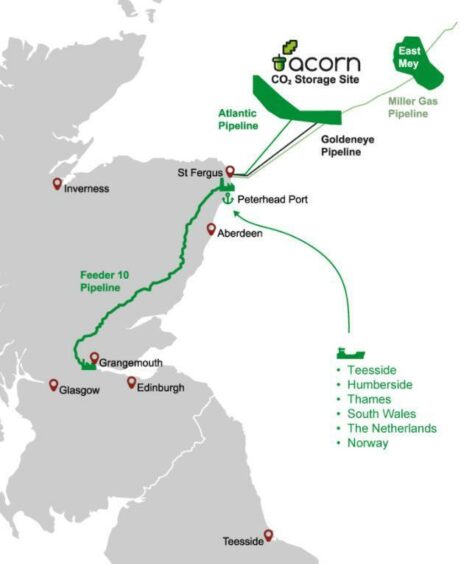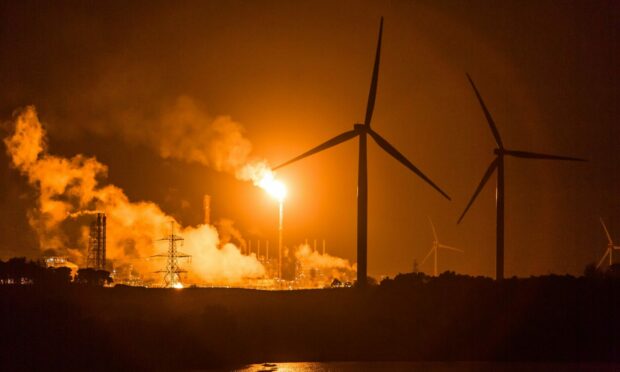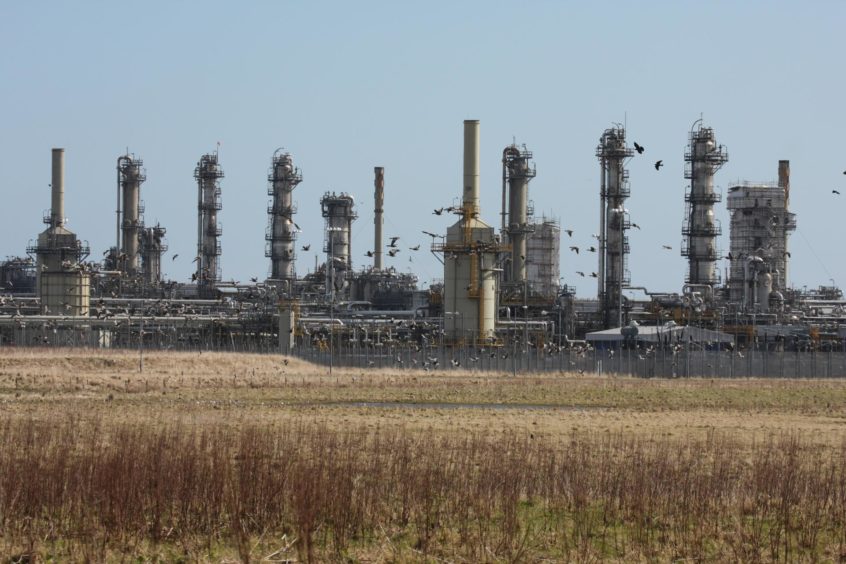Carbon dioxide emissions from ExxonMobil’s Mossmorran plant could be stored under the North Sea.
The petrochemical giant has announced plans to include Fife Ethylene Plant (FEP) in the Acorn Carbon Capture and Storage (CCS) project.
“The Acorn project has the potential to capture and store CO2 emissions from Scotland’s largest industrial centre, which is an economic engine for the country,” said FEP plant manager Martin Burrell.
Mr Burrell said the agreement would pave the way for “significant emissions reduction through carbon capture and storage”.
He described the Fife plant as one of Scotland’s “vital manufacturing facilities”.
And he indicated that carbon capture would help secure its future.
Environmentalists, however, remain deeply suspicious of Carbon Capture and Storage technology.
They highlight the approach remains unproven at the scale required to substantially reduce emissions. That is despite decades of investment.
What is Acorn?
Acorn is based at the St Fergus gas terminal just north of Peterhead.
It is an ambitious project aiming to capture and store 10 million metric tons of CO2 from industry per year by 2030.
Beyond 2030, it could have the potential to store more than 20 million metric tons of C02 per year.

Acorn would achieve this by storing C02 in reservoirs. These would be at least a kilometre under ground off the coast of Aberdeenshire.
There are existing gas pipelines in north east Scotland. Acorn plans to repurpose these to take C02 to its storage site in the North Sea.
The project recently announced plans to capture and store CO2 from the Grangemouth Refinery.
Joe Blommaert is president of ExxonMobil Low Carbon Solutions.
He said the use of carbon capture at Mossmorran “demonstrates our commitment to reducing CO2 emissions from the industrial sector.”
He added that with the right government policies in place and industry collaboration, carbon capture could deliver “large-scale, game-changing emissions reductions.”
The announcement is timely, with the COP26 climate summit in Glasgow just weeks away.
Climate campaigners want the plant shut down
Environmentalists claim CCS does little to stop the extraction and burning of fossil fuels needed to reduce emissions.
ExxonMobil has been repeatedly under fire for Mossmorran’s impact on the environment and surrounding communities.
Climate activists have held protests outside the plant calling for its closure.
And residents are losing patience with the noise, vibrations and light pollution caused by flaring.
ExxonMobil Low Carbon Solutions says it is looking at the potential for other carbon capture schemes across its global operations.











